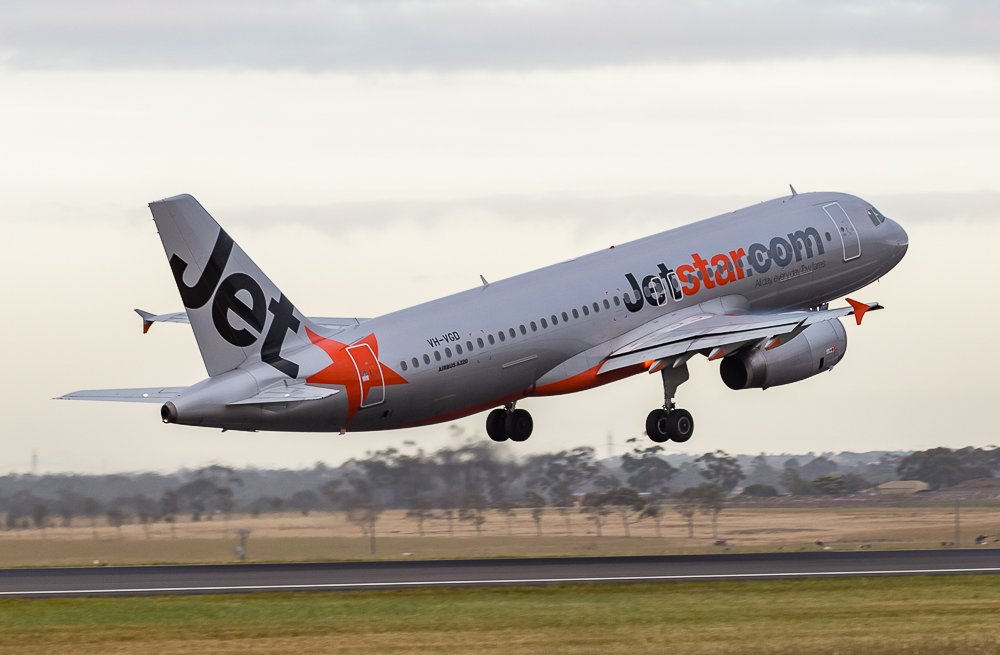One of the world’s most successful low-cost airlines, Jetstar, was born out of a need to take on an aggressive new player in Australia’s aviation space nearly 20 years ago. In an interview on Wednesday, Qantas boss Alan Joyce explained the simple reason Jetstar come about.

Qantas will always rise to competitive threats, says airline boss
Interviewed by Adrian Schofield as part of the ATW Leadership Forum this week, Alan Joyce said his airline had always responded to competitive threats thrown up by Virgin Australia and would continue to do so. He also said the early rise of Virgin Australia, then Virgin Blue, forced Qantas into creating Jetstar. At the time, it was a gamble. But Jetstar would go on to show other legacy airlines how it was done. It would show how an established full-service airline could also successfully operate a low-cost carrier.
“Virgin Australia was a hybrid model at one stage when Brett Godfrey ran it, and it was a pretty successful airline for that decade, and it made a lot of money,” said Mr Joyce.
“We’ve always said that when competition challenges Qantas, it raises its game.
“When Virgin first started in the market, we were challenged by that, and it forced us to create Jetstar, which we did in 2004.
“It forced us to upgrade and improve the Qantas product, which we did over that decade, and it made us a better competitor.”

Virgin Blue shook up the aviation scene early on, forcing Qantas’ hand
Virgin Blue started small in August 2000, flying a pair of Boeing 737-300 planes from some pretty ramshackle airport terminals. It was a bonafide cheap and cheerful operation. Virgin Blue became the first proper low-cost carrier to fly in Australia. Throughout the 1990s, various more upmarket airlines had tried and failed to gain traction flying around Australia.
Virgin Blue also got an almighty kick along when Ansett Australian went into voluntary administration in September 2001. There was a big gap in the market, and Virgin Blue was ready and willing to jump in.
In a short space of time, Australia went from a cozy duopoly with two premium carriers to a market with one established premium airline and one fast-growing and aggressive low-cost carrier.
Qantas had Jetstar up and running by October 2003. Who was the CEO of Jetstar back then? The ever-present Mr Joyce. For the remainder of that decade, Jetstar and Virgin Blue competed in the same low-cost market space. But it was a fast-growing market space. Further, Australians discovered they could live without the bells and whistles of a full-service carrier for a short flight.

But as Alan Joyce noted this week, as Virgin Blue metamorphosed into Virgin Australia, a couple of key strategic errors got made.
“They created Tiger, which was a complete disaster and failed in the market.
“And then it (Virgin Australia) changed its model and was badly managed for a decade, trying to go upmarket, trying to compete against Qantas, leaving the low-cost end of the market to Jetstar completely.”
Instead of powering on as a low-cost airline and making money, Virgin Australia decided to emulate the Qantas model of a full service and a low-cost carrier. But Virgin Australia couldn’t match the firepower behind the Qantas offering, and ultimately, both Virgin Australia and its low-cost subsidiary, Tiger, failed.
Where other airlines have failed, Jetstar powers on
Nearly 20 years down the track, the irony is that Jetstar has become a powerhouse airline in its own right. Virgin Blue’s early success may have forced Qantas’ hand and lead to the creation of Jetstar. But Jetstar is the airline coming out of this whole mess a winner.
Meanwhile, Alan Joyce is keeping a watchful on a relaunched Virgin Australia. He’s personal mates with the new Virgin Australia CEO, Jayne Hrdlicka (who’s an ex-Jetstar CEO herself) but says that won’t stop Qantas from stepping up again. When asked about the threat the newly re-invigorated Virgin Australia posed, Mr Joyce said;
“Virgin are going to come out of administration leaner and meaner. They’ve been able to walk away from aircraft contracts. They’ve been able to renegotiate lease rentals on aircraft. They were able to walk away and renegotiate contracts across the board.
“We’ve also said that we need to make sure that we’re competitive, particularly making sure now that Jetstar is the lowest cost operator in the market, but also making sure that Qantas keeps its competitive advantage.”
[ad_2]
Source link


